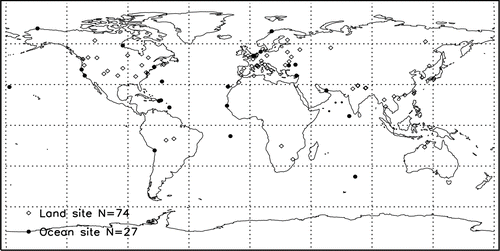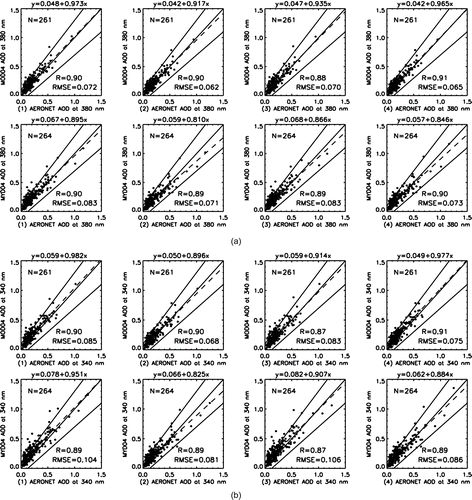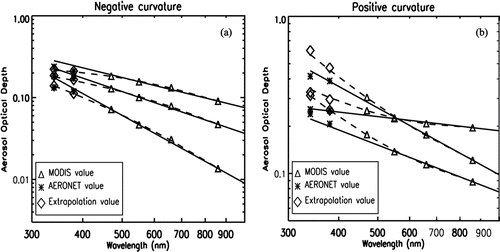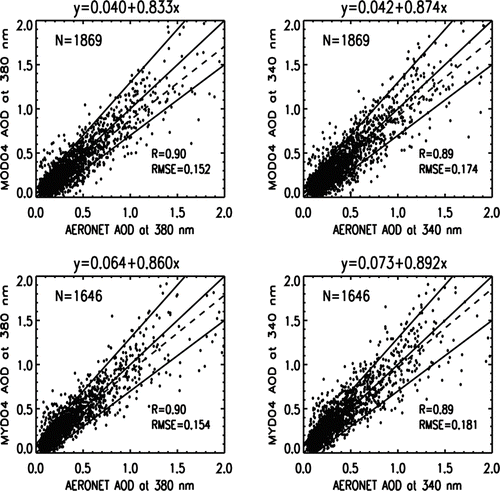Figures & data
FIG. 1 The distribution of the AERONET stations used for the study. The diamonds show the locations of the stations over land, and dots are those over ocean.

FIG. 2 (a) Comparisons of the extrapolated UV-AOD at 380 nm over ocean with AERONET observations. The solid diagonal line in the middle represents the line y = x, and the two solid lines above and below the middle line are y = 0.05 + 1.2x and y = −0.05 + 0.8x, respectively, corresponding to the uncertainty estimation of Δτ = ±0.05 ± 0.20τ. The dashed line is for the linear fitted result. The sub-plots 1–4 stand for the results using Method 1–4, respectively. For each method, the above plot uses MOD04 AOD data from Terra to extrapolate to 380 nm, and the lower one uses MYD04 data from Aqua. Most of the four methods show a good correlation (Rs range from 0.88 to 0.91) with AERONET data. Method 2 shows the lowest RMSEs (RMSEs from 0.062 to 0.071). Method 3 shows a relatively low R at 380 nm (R = 0.88 for MOD04 AOD). (b) The same as , but for UV-AOD at 340 nm. Rs range from 0.87 to 0.91, RSMEs from 0.068 to 0.106. Method 3 shows a relatively low correlation (R = 0.87) with AERONET values. Method 2 still shows least RMSE among all the methods.

TABLE 1 Percentage of derived UV-AOD falling into uncertainty of (Δτ=±0.05±0.2τ)
TABLE 2 The fitted relationships of UV-AOD validation by AERONET and the corresphonding standard deviation (δ) for the slope and intercept
FIG. 3 The relationship between AOD and wavelengths in a log-log scale for the positive curvature (a) and negative curvature (b). Triangles stand for MODIS VIS-AOD at 470, 550, 660, and 860 nm. Stars stand for AERONET UV-AOD at 340 and 380 nm; and diamonds for extrapolated MODIS UV-AOD using curvature fitting (dashed line); the solid line stands for linear least square fitting. The curvature method works better than linear least square fitting method for negative curvature condition (the fine particle aerosols), because of the spectral dependence of fine particles. And linear least square fitting method do a better job when aerosol is coarse particle dominated, because Angstrom Index of coarse particles is close to zero with little change.

FIG. 4 Comparisons of the extrapolated UV-AOD at 340 and 380 nm over land with AERONET observations. Only Method 1 is used over land because of limited bands of MODIS aerosol products. The extrapolated UV-AOD derived from MOD04 and MYD04 still shows a nice correlation with AERONET values as it does over ocean (Rs range from 0.89 to 0.90, RMSEs from 0.152 to 0.181). RMSEs are higher than the ocean extrapolated UV-AOD.
